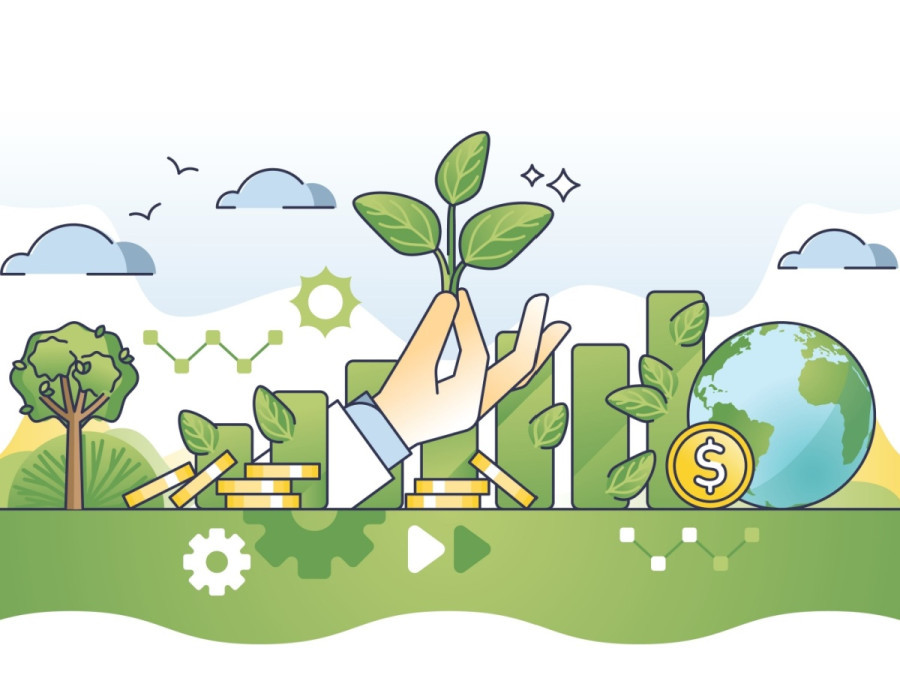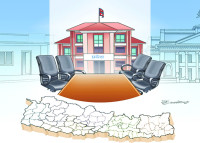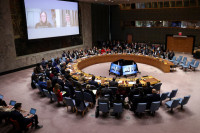Columns
Promoting sustainable business
As one of the world’s most climate-vulnerable nations, sustainability is more than just survival for Nepal.
Roshee Lamichhane
Businesses worldwide are reevaluating their growth strategies in response to rising global standards, shifting customer preferences and climate risks. Nepali businesses can’t remain an exception. It is no longer a choice between profit and the planet, but about building resilience and long-term competitiveness while addressing both. Often, sustainability is viewed as a public relations effort or a cost centre. However, companies across the globe that adopt an integrated approach guided by the ‘triple bottom line’ of people, planet and profit have established that sustainable practices can increase market share and reduce costs.
Global experience
Lessons from around the world demonstrate that incorporating sustainability into a core strategy involves striking a balance between profit and responsibility. To cut waste and introduce new product lines, companies like H&M have embraced circular economy models by collecting discarded clothing for recycling and reuse. Similarly, Swire Properties reduced its greenhouse gas emissions intensity by over 20 percent through digital innovations, including smart lighting, renewable materials and 3D modelling for energy efficiency. These measures not only cut costs but also lower their carbon footprint. Firms like Tesla, IKEA and Patagonia have also demonstrated that embedding sustainability into their core values boosts loyalty and resilience. While Tesla’s focus on clean technology has transformed entire industries, Patagonia’s product repair programmes and IKEA’s investments in green energy have attracted value-driven consumers.
These examples reveal a key lesson for Nepali companies: Making sustainability a strategic goal can drive innovation, reduce risks and generate long-term competitive advantages. These examples suggest profit and purpose can coexist if sustainability is integrated into strategy rather than tacked on afterwards.
A green shift
Nepal’s policy environment has updated its climate commitments under the Paris Agreement and aims for net-zero emissions by 2045. The central bank introduced a Green Finance Taxonomy in 2024 to direct funding towards environmentally sustainable industries. Nepal issued its first publicly listed green bond worth Rs5 billion (about $36 million) on June 1, 2025, with the help of KOICA and GGGI to fund renewable energy projects and advance Nepal’s green finance ecosystem. These measures are meaningful, not symbolic.
Agroforestry, ecotourism and organic farming are also prioritised in national efforts to promote rural development. Businesses are encouraged to leverage cultural assets like handicrafts, bamboo products, tea and tourism to develop sustainable, value-added enterprises. The ‘quintuple bottom line’—People, Planet, Profit, Purpose and Place—is used by the Creative Green Economy (CGE), which emerged from Nepal-UK collaboration on craft and climate, to direct locally based, culturally motivated businesses that place a higher priority on small-scale operations and replication for wider economic impact.
The private sector is responding, with companies pursuing green building, organic food production and solar farms. Nepal’s clean energy and conservation efforts have received financial support and technical assistance from international partners such as GGGI, UNDP and ADB. Conservation and clean energy have become national goals. Businesses can obtain less expensive credit, subsidies or tax incentives by aligning them. More significantly, they draw in foreign investors who are more conscious of environmental, social and governance (ESG) requirements.
Notable startups throughout Nepal are demonstrating that profitability and sustainability can coexist. For instance, Tyre Treasures and Kokroma show how eco-design may appeal to conscientious customers. By educating customers on the importance of sustainability, these businesses exemplify the shared value idea, which aims to solve environmental or social issues while making money.
Compliance or competitiveness?
Globally, ESG is now a mandatory requirement, which presents opportunities and challenges for Nepali businesses. The impact is felt by export-oriented industries in Nepal. In the past, carpets associated with child labour were rejected by European purchasers. International criticism of the brick business has led to projects like Better Brick Nepal, which is currently creating a supply chain free of child labour. ESG requirements, which include community involvement, environmental protection, labour rights and anti-corruption measures, are increasingly non-negotiable. Customers want to know if a product is fair-trade, organic, or free of child labour.
Additionally, domestic customers are becoming more conscious and questioning how businesses contribute to society. Sustainability has long been embraced by several Nepali businesses without being referred to as ESG. Since 1984, Kanchanjunga Tea Estate has invested in community welfare, adopted organic techniques and obtained international certification. In line with international standards like the Task Force on Climate-related Financial Disclosures (TCFD), certain businesses, including Dolma Fund Management, are incorporating ESG due diligence into each investment choice.
However, issues including insufficient data quality, disjointed standards and lack of experience still exist. For ESG assessments, a lot of businesses use foreign experts. The ability to report is limited, and it can be difficult to distinguish between true compliance and ‘greenwashing’. ESG will soon be as commonplace for Nepali companies looking to expand internationally as ISO certifications were.
Challenges and prospects
Sustainable businesses still have a long way to go despite advancements. There is a shortage of capital. Due to Nepal’s limited market, investors continue to be risk-averse. High interest rates are associated with bank loans, and consumer education is essential before many green products may become popular. Bamboo, organic inputs and recycling have weak supply chains and scaling up has remained a challenge due to inadequate infrastructure. But the ecology of support is getting stronger. Green industrial clusters, donor-funded initiatives and business incubators are all growing. Despite being implemented unevenly, government incentives are on the right track. Above all, the public’s perception is changing because of success stories. Demand for sustainable products is predicted to increase as awareness grows, reducing obstacles for the upcoming generation of eco-entrepreneurs.
Globally, climate finance is growing, and investors are actively looking for projects in nations that are at risk, such as Nepal. Developing the technical capacity to monitor emissions, create green bonds or test novel technologies like green hydrogen is the difficult part. Specifically, green hydrogen has been identified as a strategic possibility. Nepal could eventually export hydrogen fuel, replacing expensive petroleum imports and lowering its trade imbalance, thanks to its plentiful water and hydropower. However, robust legislation, committed infrastructure and trained labour are necessary to make such changes a reality.
Nepal can learn from successful global examples. Sustainability can evolve from being merely an organisational goal to becoming a foundation of an organisation’s core business strategy. If there are clear regulations and trustworthy data, emerging options like carbon credits and blended financing could bring foreign investment to Nepal. Businesses in Nepal can become more resilient, draw in international investment and spearhead South Asia’s green revolution by incorporating sustainability and ESG concepts into their strategy. Going green is now a competitive requirement rather than a moral choice. Businesses that embrace this change by making investments in sustainable design, ethical supplier chains and renewable energy will not only endure but prosper.
Being among the world’s most climate-vulnerable nations, sustainability is more than just survival for Nepal. It is about taking advantage of the opportunity to establish a new growth model where profit and purpose coexist.




 15.69°C Kathmandu
15.69°C Kathmandu.jpg)















